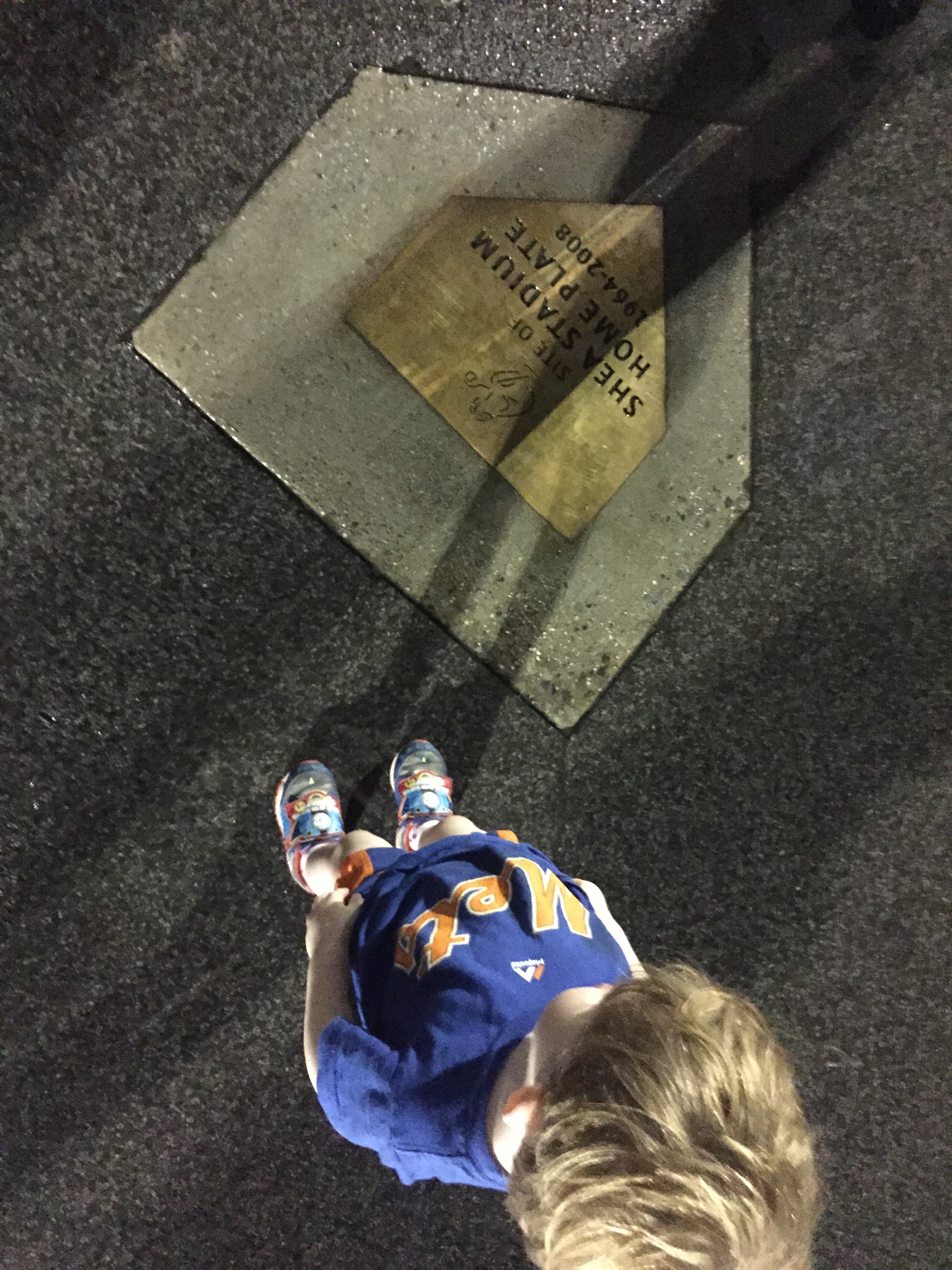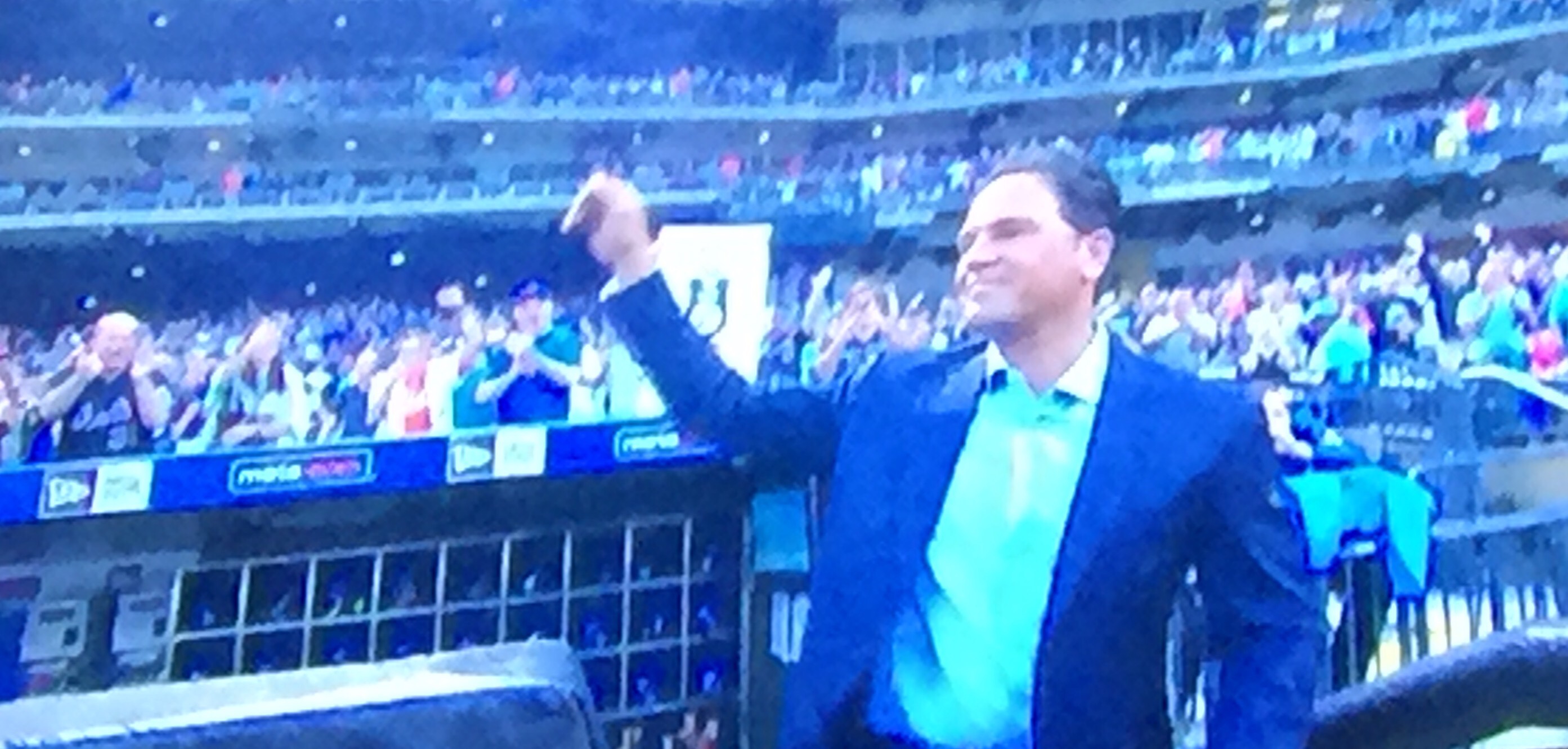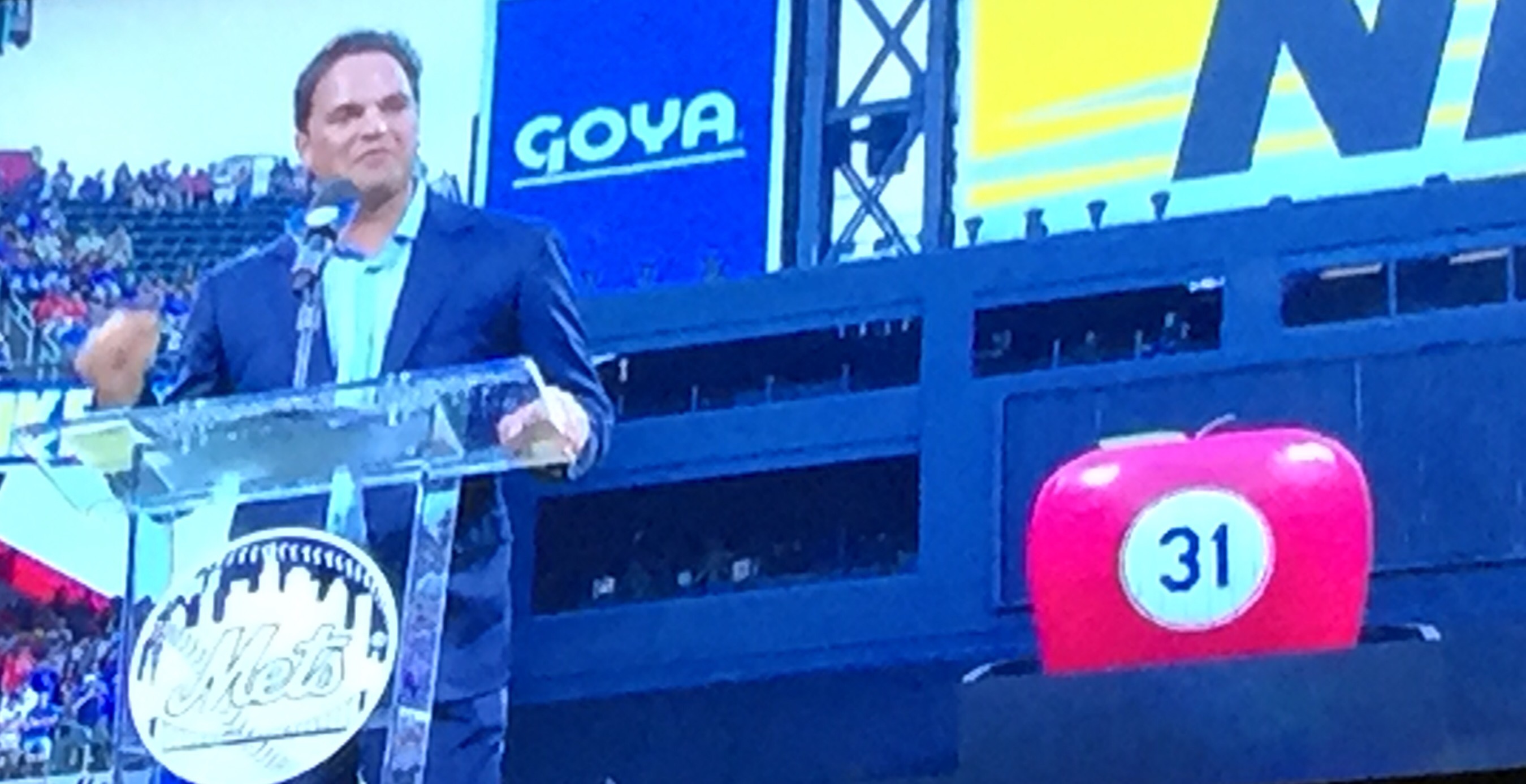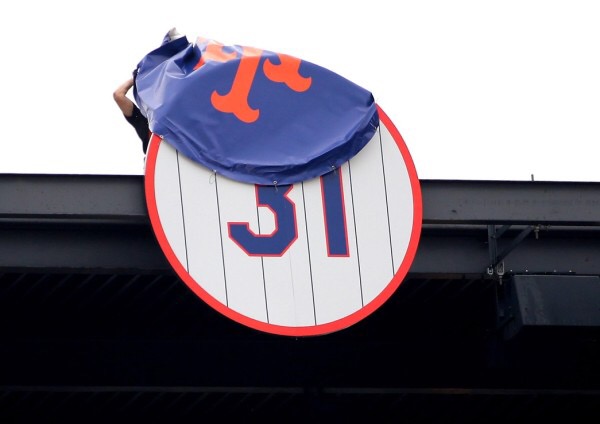Retired Numbers
Dwight Gooden and Darryl Strawberry forever defined an era of New York Mets baseball, the best era of Mets baseball. Despite that, they are forever defined not by what they did, but by what they failed to do.
We will never know how many more World Series the Mets win if Strawberry and Gooden were clean. Notably, Gooden missed the 1986 victory parade because he was getting high.
It wasn’t just about the World Series titles or other missed chances at the postseason. It was about what they did to their own careers. The narrative is they should’ve been Hall of Famers.
With regard to Strawberry, that was undoubtedly true. It’s a testament to his abilities that he was the best position player in Mets history despite the drug problems.
In his Mets career, he amassed a 36.6 WAR. For the sake of comparison, Dave Winfield, the right fielder on the other side of town, had a 32.0 WAR over his first eight seasons.
Remember, this was with Strawberry battling drug (and related domestic) problems. For that, the Mets were done with him, and he was off to Los Angeles where his life and career would spin out of control.
Gooden has always been a different issue. We forget his career was plagued by shoulder problems. We need not look further than Johan Santana to see how that can completely alter a career.
We could argue the drug problems played a role. Given how Gooden was off found drugs when he should’ve been doing other things leads credence to that. However, we’re also talking about a pitcher who threw 800.2 innings before his age 22 season.
Knowing what we know now, Gooden’s arm was abused. We saw his body break down. With that, his Hall of Fame chances might’ve been overstated. Maybe not.
Wherever you land, we can all agree Gooden limited his own potential and production. Same goes for Strawberry. It’s why they are cautionary tales.
It used to be you needed to be a Hall of Famer to have your number retired by the Mets. It should probably remain that way. Strawberry and Gooden are reasons why.
As much as they did for the franchise, they also harmed the franchise. The Mets run wax cut short for years. Their impact has been too far long lasting . . . just not the way we hoped it would be.
For Gooden, his story never seems to have a happy ending. Just when you think all is good, he’s back in the news. With respect to Strawberry, he finally seems on the right path, and you could see this moment the culmination of his not just saving his life but working towards saving the lives of others.
That’s the way it is. Retiring their numbers is about what they did. It’s also forever immortalizing what could have been. That’s the way it always was with Doc & Darryl.
Their story is more about the fall than the greatness. In the end, the Mets chose to honor all of it.
It used to be in order for a New York Mets player to have their number retired, they needed to be inducted into the Baseball Hall of Fame as a New York Met. That is why Tom Seaver and Mike Piazza had their numbers retired, and why Gary Carter didn’t. Had the Baseball Hall of Fame not treated Carter differently than every other Hall of Famer in baseball history, his number 8 would be in the rafters at Citi Field.
Somewhere along the way, perhaps not coincidentally coinciding with Steve Cohen’s purchase of the New York Mets, the Mets changed their policy on retiring numbers. First, it was Jerry Koosman. Then, it was Keith Hernandez. Certainly, we anticipate David Wright will be next followed by a massive argument amongst the fanbase as to who gets their numbers retired.
Therein lies the problem. When the Mets had a stringent policy, there was at least one. A player wasn’t slighted by not having their number retired, and they weren’t having their career or impact on the Mets belittled. Rather, there was a policy in place, but there was a Mets Hall of Fame available for some of the true Mets greats.
Now, there is admittedly a quagmire. While you can argue Koosman and Hernandez tweak the standard to impactful and great Mets who have won a World Series, Wright’s eventual number retirement will throw all of that out. What follows is really just chaos, and more importantly, a need for explanation on a number of players.
John Franco is the all-time leader in team history in saves, and he was the third team captain in history. You can argue his number should now be retired. If it should, do you double retire 31, or do you retire his 45? If you opt for 45, why not Tug McGraw too?
However, if you retire McGraw, do you then have to look at Armando Benitez, Jeurys Familia, and Jesse Orosco? All three have more saves and pitched on Mets pennant winning teams.
What happens to Edgardo Alfonzo? By WAR, Alfonzo is the Mets best middle infielder, and he ranks ahead of Hernandez in the rankings. He was part of the best infield in Major League history, was a clutch hitter, won a pennant, and he won the New York-Penn League championship as a manager.
Bud Harrelson was the first Met inducted into the team Hall of Fame, and he’s the only man to win a ring with the 1969 and 1986 teams. Howard Johnson was the first Met to have a 30/30 season, he’s the only Met to do it twice, and he was part of the 1986 Mets.
Of course, you have Dwight Gooden and Darryl Strawberry. Both symbolize all that was great and went wrong with those 1980s teams. To this day, you could argue they’re also two of the most beloved Mets ever.
Everyone is going to have their line and opinion. Without clear standards, each and every one of these players will be slighted by not having their number retired. There are and will be more.
Yes, honoring Koosman and Hernandez is great. They deserve to be honored. It feels good to honor them.
What doesn’t sit right is all those who won’t get that honor now wondering why they haven’t.
On his Twitter account, Mets starter Marcus Stroman said he was going to change his number from 7 because he believes the number belongs to Jose Reyes. Now, if Stroman is making this decision on his own, he’s entitled. After all, it’s his number.
However, given the fact these are the Wilpons, there is some hesitation here.
Right before the season ended, the Mets announced they were going to retire Jerry Koosman‘s 36. At the time of the announcement, the Mets also indicated there were going to be other retirement ceremonies coming in the future.
Most assume that automatically paves the way for Gary Carter, Keith Hernandez, and David Wright to have their numbers retired. There are other players who merit consideration as well. Under no circumstance should that list of players under consideration include Jose Reyes.
While the Mets were losing Game 4 of the 2015 World Series, Reyes was spending his night in jail while his wife had to go to the hospital as a result of Reyes grabbing his wife by the throat and threw her into a sliding glass door leading out to a lanai in their hotel room at the Four Seasons in Maui.
As a result of his abuse, Reyes received what was at the time the longest ever domestic violence suspension. He’d also be released by the Colorado Rockies.
The only team willing to bring him aboard was the Mets. It wasn’t a surprise given the team’s need for a third baseman due to Wright’s stenosis, the teams shoestring budget, and this being the same team who was sued for firing an unwed pregnant woman.
After Reyes wasn’t particularly good in 2016 (-6 DRS, 0.6 WAR), the Mets brought him back in 2017. He’d be even worse in 2017 with a -0.4 WAR. Somehow, that earned him a $2 million deal to come back in 2018.
That season, Reyes was flat out terrible. Worse than that, he was a malcontent who went public with his demands for more playing time he did not merit.
In the end, that’s what you have with Reyes – a man (if you can call him that) who beats his wife and complains about playing behind players playing much better than him. When viewed through that prism, there’s absolutely no way you even contemplate retiring his number.
If you want to look past that (you shouldn’t), he still hasn’t done enough to have his number retired.
Despite playing 12 years with the Mets, he’s only 10th in career WAR. He’s not in the top 10 in average, OBP, SLG, OPS, OPS+, wRC+, homers, or walks. Keep in mind, he has the third most plate appearances in team history.
Yes, he leads all-time in triples and stolen bases. On the later, he also has been caught stealing more than anyone too.
Looking beyond that, when he was on the Opening Day roster, the Mets went to the postseason once, and in his 11 postseason games, he hit .239/.275/.354.
In the end, there are plenty of things you can point to in making the case Reyes was a good player on the field for the Mets. He’s also clearly the best shortstop in team history. What he isn’t is someone who merits having his number retired.
In a shock to everyone, the New York Mets announced they were going to retire Jerry Koosman‘s number 36. Previously, as was the case with Tom Seaver and Mike Piazza, the Mets standard for retiring a player’s name was their induction into the Hall of Fame wearing a Mets cap. Now that the standards have officially been lowered, there are a number of other Mets who deserve consideration for the same honor as Seaver, Piazza, and Koosman.
#5 David Wright
Wright is the Mets all-time leader in WAR among position players, and he has set team records in at-bats, plate appearances, run scored, hits, total bases, doubles, walks, RBI, and a number of other categories. He was a consummate professional, a real face of the franchise, and a player who stuck around even when the team was rebuilding.
If not for injuries, Wright would have been a Hall of Famer. He is one of the most, if not the most, beloved Mets to put on the uniform, and he is only one of four captains in team history.
#8 Gary Carter
Under the previous standard, Carter’s number would have been retired had the Hall of Fame not forced him to go in as a Montreal Expos player instead of as a Mets player as he had wanted. Of course, lost in the Hall of Fame’s decision was one of the reasons Carter was even inducted into the Hall of Fame was his time with the Mets.
Carter proved to be the missing piece which would push the Mets over the top in 1986. Speaking of 1986, he was the guy who got the two out single against Calvin Schiraldi to get that rally started. His contributions in that series were much more than that as he led all players in homers and RBI.
Carter was also noted by several of the Mets pitchers as being what helped put that pitching staff over the top. Dwight Gooden said of him, “I relied on Gary for everything when I was on the mound.” Ron Darling said, “With all the sabermetric numbers that we use today, when Gary came over, he brought his own National League computer with him — it was his brain.” (ESPN).
With Carter, the Mets had their greatest run in franchise history, and he was a leader on that team. He was the second captain in team history, and he is one of the most important players who ever put on the Mets uniform.
#15 Carlos Beltran
The people largely against this are fixated on that strikeout, but what those people overlook is the Mets are nowhere near that position if Beltran doesn’t have what could be the greatest season a Mets position player has ever had. That includes his hitting .296/.387/.667 in that sereis. That year and during his Mets career Beltran played like the Hall of Famer he will officially be once he is eligible.
Beltran is the greatest center fielder in team history, and he was a true five tool player winning three Gold Gloves and two Silver Sluggers while being a member of the Mets. That was part of him being named an All-Star in five of his seven years in Queens.
When you break it all down, Beltran is a Hall of Famer who had his best years with the Mets, and everything being equal, he would wear a Mets cap on his plaque.
#17 Keith Hernandez
While Carter was largely viewed as the player who put the Mets over the top, Hernandez was seen as the player who taught a young talented Mets team how to win. Of course, lost in that narrative was how Hernandez was a driving force in helping those Mets teams win.
In his seven years with the Mets, he had seven Gold Gloves, which is the most in team history. He was more than his glove having a the third best OBP, fifth best OPS+, and 10th most RBI in team history.
He was a fiery leader who famously warned Jesse Orosco to not throw another fastball to Kevin Bass. Of course, his leadership was much more than that, which is one of the reasons why he was the first ever player to be named captain.
Of course, we cannot discuss Hernandez without acknowledging his work in the booth. His color commentary has made him an even more beloved Met. If his playing career wasn’t sufficient, certainly his being a vital part of “GKR” puts him over the top.
#45 John Franco
Franco is the greatest closer in Mets history. He has the most appearances and saves in Mets history. In fact, his 424 career saves ranks as the most saves ever by a left-handed reliever. While he played for a number of bad Mets teams, he would come up big many times when the Mets needed him most.
He has a 1.88 postseason ERA for the Mets. Included in that was his striking out Barry Bonds, and his getting the win in Game 3 of the 2000 World Series. As big as those moments were, it is possible his biggest moment was his getting the win the first game back after 9/11 wearing an FDNY cap honoring his friends who died that day.
It should also be noted Franco was a rare closer who was also a team leader. He famously not only surrendered his 31 for Piazza, he would also make sure to make him feel welcome in New York. That was certainly a factor in Piazza staying. It was also a reason Franco was named the third captain in team history.
With respect to Franco, it should be noted his predominantly wearing 31 could mean the team could retire that number in his honor as well. The team also has the option of retiring 45 in both his and Tug McGraw‘s honor. The same tactic can be used for number 5 with Davey Johnson also arguably deserving the honor for arguably being the best manager in team history.
Beyond this group of five players, there are certainly more players who could be argued with everyone having their favorite players and other players having had a significant impact on the team and its history. Of course, it should be noted this list includes players who are no longer playing. If we were to expand it, we would have to also include Jacob deGrom on this list.
The one thing we know is the next player who will have his number retired is Koosman. It is an honor befitting one of the greatest Mets in team history, and it should lead to more emotional days at Citi Field honoring Mets greats.
While it is not an official policy, the Mets organization will only retire the numbers of players who enter the Hall of Fame wearing a Mets cap. That is why the only Mets players who have their numbers retired are Tom Seaver and Mike Piazza. If the Baseball Hall of Fame honored Gary Carter‘s choice, he would have gone into the Hall of Fame with a Mets cap, and as a result, his number would have been retired as well.
That would have pleased many Mets fans who want to see his number be retired. More than Carter, Mets fans seem to want to see Keith Hernandez‘s and David Wright‘s numbers retired. With respect to those two, chances are neither enter the Hall of Fame, and just like Carter, chances are Hernandez is inducted into the Hall of Fame wearing a Cardinals cap.
Much of the Carter and Hernandez push is related to both players being key veterans on the 1986 World Series team. Oddly enough, the same case has not been made for Davey Johnson.
Back in 1984, Frank Cashen tabbed Johnson to be the Mets manager. He was entasked with leading a Mets team to not just win a World Series, but really to just win games. The Mets had not been over .500 since 1976, which was Seaver’s last full season with the Mets. Seaver was back in 1983 only for the Mets to lose him again.
The winning happened immediately. Behind Rookie of the Year Dwight Gooden, and a young core which included Darryl Strawberry, Wally Backman, Ron Darling, and Sid Fernandez, the 1984 Mets finished second place in the National League East with a 90-72 record. This began a string of eight straight seasons where the Mets would finish second or better in the division. Johnson would oversee six of those seasons.
The 1985 Mets won 98 games, which was then the second most wins the Mets had ever accumulated. They were that close to winning the division. Entering 1986, Johnson would declare the Mets were the team to beat, and his team would back him up. Their 108 wins is the third most ever by a National League team.
When you include the postseason, the 1986 have won more games than any other National League team over the past century.
Yes, this does speak to how great the 1986 Mets were, but it also speaks to Johnson’s managerial abilities. He was ahead of his time using data and statistics to inform his decisions. Yes, those 1980s Mets teams were talented, but it was Johnson who got everything out of those talented teams by optimizing his team’s lineups.
This is why Johnson would become the first ever National League manager to have 90+ wins in each of his first five seasons.
He’s also the only Mets manager with two 100 win seasons. He joins Gil Hodges as only one of two Mets managers to win a World Series, and he was the first Mets manager to go to two different postseasons.
Johnson is the Mets all-time leader in wins and winning percentage. He is second only to Terry Collins in games managed. He is second to Bobby Valentine in postseason wins, which is partially a function of Major League Baseball adding an additional postseason round when they added the Wild Card in 1994.
Despite all of these records and his impact on the franchise, Hodges and Casey Stengel remain the only two managers who have had their numbers retired by the Mets. Given how the standards to retire manager numbers (to the extent there is any) is far lower than for players, it is odd how nearly 30 years after Johnson managed his last game, he has not had his number retired.
His number not being retired may become more of an issue going forward as once again he is a candidate on the Today’s Game ballot for the Hall of Fame. With his having a better winning percentage than Hall of Famers like Bobby Cox (a manager who also has just one World Series to his credit), and his being only one of two managers in MLB history to lead four separate franchises to to the postseason, there is a real case to be made for Johnson’s induction.
If inducted, he is likely going to enter the Hall of Fame as a member of the Mets. If so, any and all excuses to not retire his number have gone by the wayside. Of course, that is unless you are not of the belief Johnson has not done enough to merit having his number retired anyway.
Given how his number has not been retired, it is certainly still up for debate whether it should or should not be retired by the Mets organization. Going forward, when debates happen,,when taking into account standards already set forth coupled with the impact on the organization, Davey Johnson should probably be first in line when it comes to having his number retired.
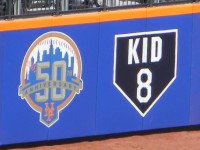
Every single one of us has our favorite players. Growing up, I loved Gary Carter. If I had a blog back in 1997, it would’ve been named ElectGaryCartertotheHallofFameNow.com.Finally, in 2003, The Kid was finally elected in the Hall of Fame. I wanted him to go in as a Met and for him to have his number retired by the team.
There would be controversy over his cap. To understand the controversy, we have to go back in time a bit. There was a time that players were not selecting caps due to the team they felt most closely aligned or where they accomished the most. No, players were selecting caps based upon financial incentives.
Dave Winfield received $1 million to wear a Padres cap on his Hall of Fame plaque when he was inducted in 2001. Winfield going into the Hall as a Padre wasn’t an egregious choice. He started his career there, and he played eight years there as opposed to nine with the Yankees. He did have better numbers with the Yankees, but he was also treated awfully by them. Steinbrenner dubbed him Mr. May to deride his production in a pennant race. Steinbrenner hired gamblers and private investigators to “dig up dirt” on Winfield to get out from under the contact. So no, it’s not surprising Winfield chose the Padres cap and the $1 million.
Winfield wasn’t egregious, but it was the sign of a larger problem. That problem would come to a head with Wade Boggs. There were rumors that Boggs negotiated in his contract that he would enter the Hall of Fame as a Tampa Bay Devil Ray. It forces the Hall of Fame’s hand, and they began the process of selecting player caps, even if it was against a player’s wishes. As we saw with Andre Dawson, it’s a move that benefitted the defunct Montreal Expos.
On the one hand, it’s a move that had to be made. You couldn’t have players and teams negotiating this away in one year contracts towards the end of a player’s career. The Hall of Fame does have some responsibility to preserve history. On the other hand, the Hall of Fame has overstepped its bounds a bit. Remember they did allow Reggie Jackson to enter the Hall of Fame as a Yankee (5 years) as opposed to the Athletics (10 years). They allowed Nolan Ryan to enter the Hall of Fame as a Ranger (5 of his worst years) instead of an Astro (9 years) or an Angel (8 years).
Carter played 12 years for the Expos, and 5 with the Mets. Based on the Jackson/Ryan standard he should’ve had his choice even if Carter was an Expo through and through. However, Carter wanted to go in as a Met. The Hall of Fame decided he would go in as the first Montreal Expos; a decision Carter did not object.
Unfortunately, the decision cost him. The Expos moved to Washington a year and a half after his induction. The franchise almost immediately unretired the number of their first Hall of Famer. Also, it cost Carter his chance of the Mets retiring his number 8.
As we saw with Mike Piazza, the Mets have set an exceedingly high standard for retiring numbers. For their players, the Mets have reserved that honor for players who have entered the Hall of Fame wearing a Mets cap. With one decision made by the Hall of Fame, not by Carter, Carter was cheated of his chance to have his number retired by the Mets. Sadly, even if the Mets reverse course, the day honoring Carter will be melancholy with his untimely death at the all too young age of 57.
If Carter isn’t there to enjoy the honor, I believe the moment has passed. As much as I may have wanted it one day, I don’t think the time is now. If the Carter family feels differently, I certainly would change my tune.


